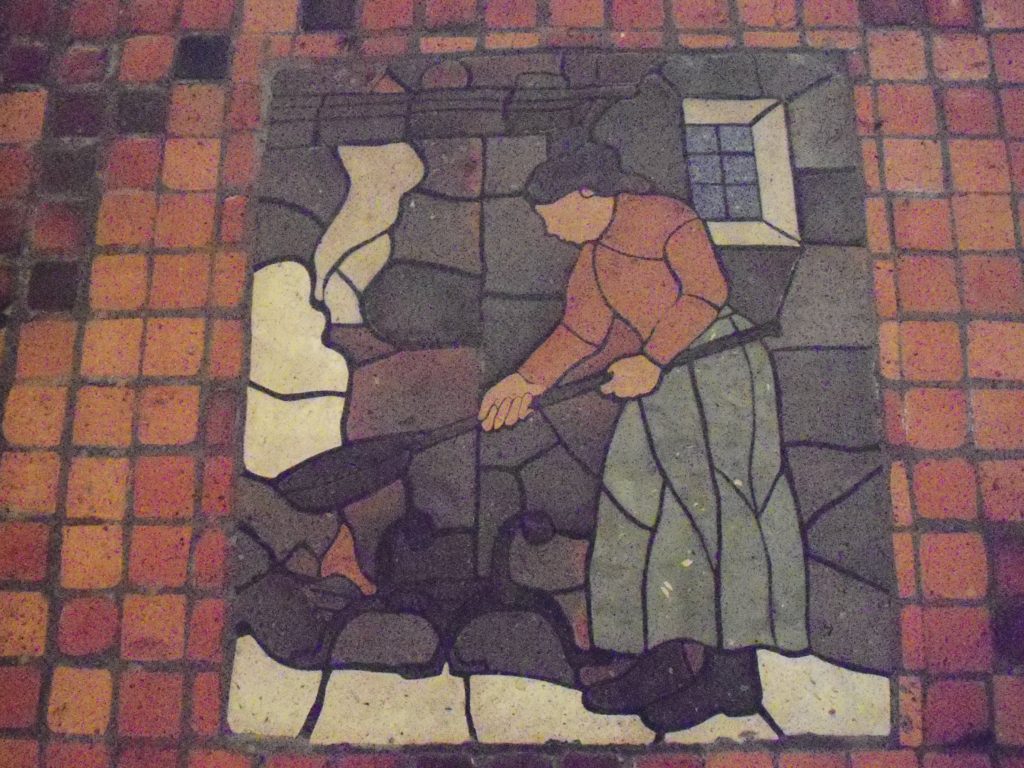
Wednesday, 28 October 2020
Before the throne there was a sea of glass, like crystal. And in the midst of the throne, and around the throne, were four living creatures full of eyes in front and in back. Revelation 4:6
John continues the heavenly scene around and before the throne saying, “Before the throne there was a sea of glass.” The word “glass” is an adjective and should read “glassy.” It describes the appearance rather than what the sea is made of. The word is only found in Revelation. This glassy sea is said to be “like crystal.” This would then indicate its purity and clarity.
As this sea is “before the throne,” it indicates that it must be crossed in order to reach the throne. The ark symbolized the throne, or dwelling place, of God in the tabernacle and temple. Therefore, the comparison is possibly being made to the bronze laver (a basin used for ceremonial ablutions) in the tabernacle and the bronze sea at the temple. The laver and the sea were used to hold water for ceremonial washing of the priests as they performed their duties. They were to “wash with water, lest they die. 21 So they shall wash their hands and their feet, lest they die” (Exodus 30:20, 21).
This washing purified the priests externally so that they could minister. What then appears to be the meaning of this glassy sea reflects the absolutely pure and undefiled state of the One on the throne. It being like crystal would then indicate that it is reflective in nature. Thus, the purity and wholly undefiled state would, through God’s light, sanctify those who come near to the throne, just as the laver/sea were used for such (external) sanctification. There is the power to transform those who approach into the purity of the image of Christ.
Next, John says, “And in the midst of the throne, and around the throne, were four living creatures.” Concerning this wording, Albert Barnes appears to correctly analyze the Greek –
“Not occupying the throne, but so as to appear to be intermingled with the throne, or ‘in the midst’ of it, in the sense that it was beneath the center of it. The meaning would seem to be, that the four living creatures referred to occupied such a position collectively that they at the same time appeared to be under the throne, so that it rested on them, and around it, so that they could be seen from any quarter. This would occur if their bodies were under the throne, and if they stood so that they faced outward. To one approaching the throne they would seem to be around it, though their bodies were under, or ‘in the midst’ of it as a support. The form of their bodies is not specified, but it is not improbable that though their heads were different, their bodies, that were under the throne, and that sustained it, were of the same form.”
If his analysis is correct, it would then correspond to the construction of the sea used in Solomon’s temple –
“And he made the Sea of cast bronze, ten cubits from one brim to the other; it was completely round. Its height was five cubits, and a line of thirty cubits measured its circumference.
24 Below its brim were ornamental buds encircling it all around, ten to a cubit, all the way around the Sea. The ornamental buds were cast in two rows when it was cast. 25 It stood on twelve oxen: three looking toward the north, three looking toward the west, three looking toward the south, and three looking toward the east; the Sea was set upon them, and all their back parts pointed inward.” 1 Kings 7:23-25
Of these living creatures, it says that they are “full of eyes in front and in back.” The thought here is that nothing is out of their view – they can see in all directions. Further, the implication is that they are open, signifying that they are always seeing and never resting. All that is done is taken in by them and evaluated by them. They would have discernment in all matters, physical and spiritual. Their gaze misses nothing, and they are ever vigilant.
Life application: Due to the apocalyptic nature of Revelation, there will obviously be a wide variety of ideas about what the symbolism of various scenes and events is conveying. Some can be more surely identified than others, but it is good to stick as closely as possible to a conservative evaluation. If Scripture elsewhere provides insights, it is to be used. If it does not, then take each symbol only so far and don’t run off on wild speculation.
Considering the nature of God, when properly understood, will often give helpful insights – He is pure, undefiled, holy, merciful, etc. Transferring those attributes to symbols is an acceptable way of making the symbolism come alive to the reader. And so, sticking with what is known, and not going too far in one’s own mind, is a sound way of looking at, and evaluating, the depictions.
Lord God, it is wonderful to know that someday faithful believers will actually gaze upon the throne of our Lord and see His majesty revealed to us. To think on His glory is simply beyond our comprehension. But You have given us advanced insights into the heavenly throne room in Your word. How wonderful is the depiction presented in its pages! Someday, our eyes will behold that wonderful scene. May that day be soon. Amen.
